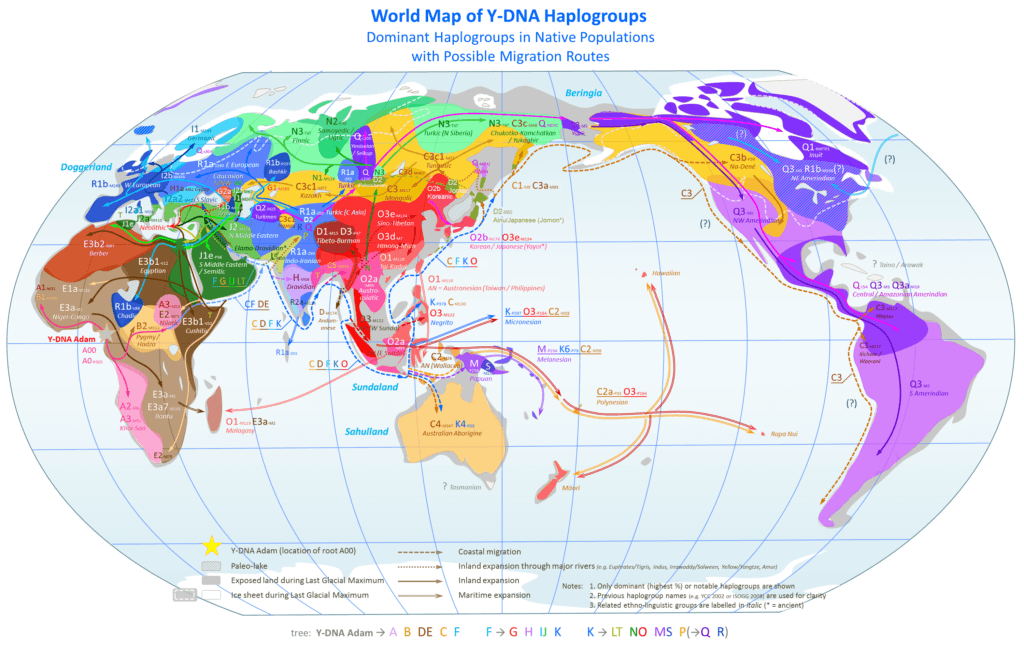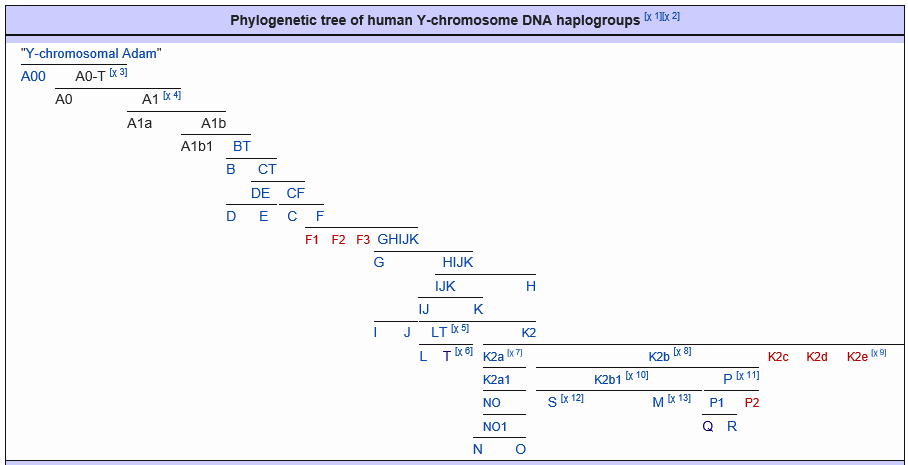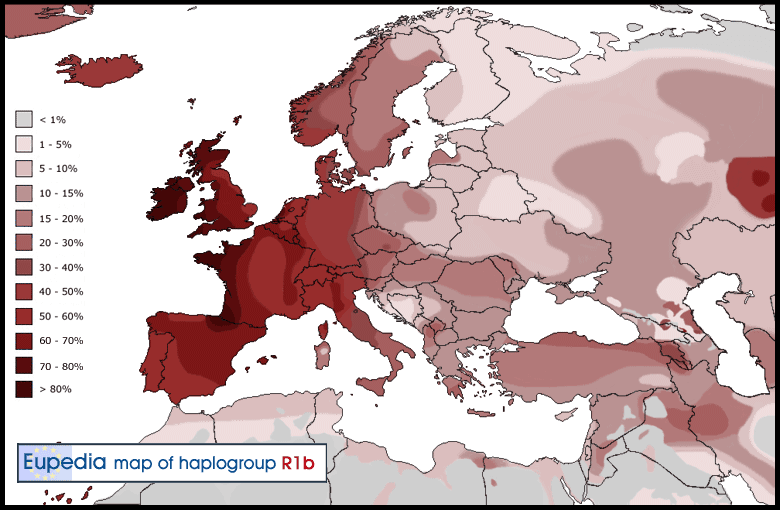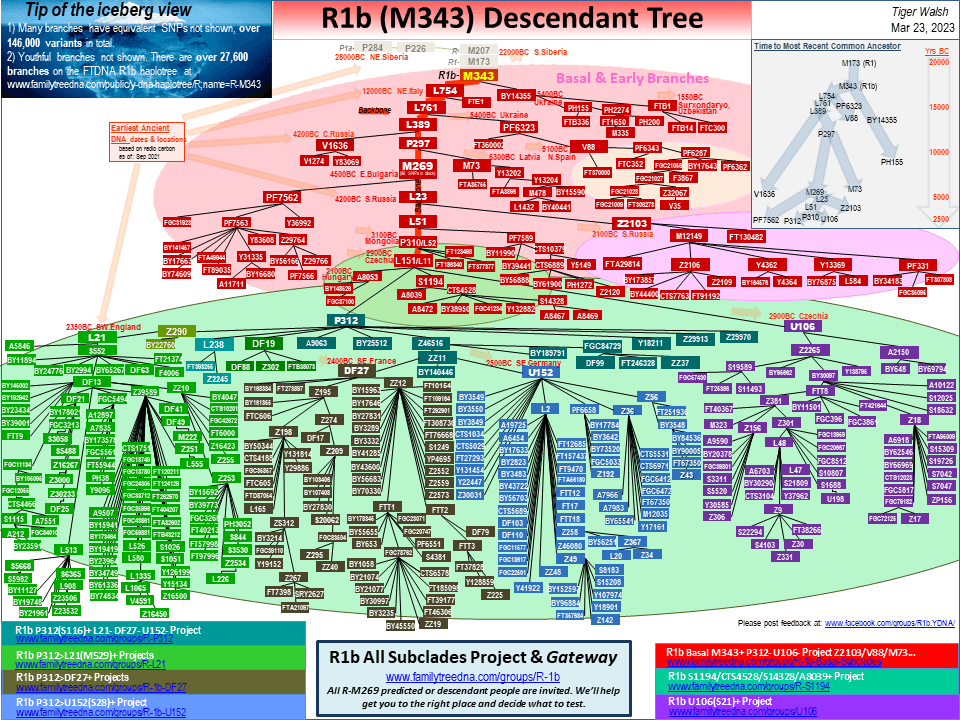DNA
Welcome to the DNA section of the Grist Family website. Here, we delve into the genetic heritage of the Grist family, exploring how DNA testing can reveal fascinating connections and enrich our understanding of our ancestry. Discover how genetic insights can complement traditional genealogy research, providing a deeper look into our family history and origins.
Haplogroups are classifications of these genetic lineages, defined by specific sets of mutations known as SNPs (single nucleotide polymorphisms). Each haplogroup represents a branch on the human family tree and can be further divided into subclades, which are smaller branches that share more recent common ancestors. These haplogroups and subclades are identified by letters and numbers, such as R1b and R-DF99, indicating the genetic markers that distinguish them.
The Grist family’s Y-DNA belongs to haplogroup R1b, one of the most common haplogroups in Western Europe. This haplogroup is part of a larger family tree that traces back to a common ancestor known as the genetic ‘Adam,’ who lived approximately 200,000 to 300,000 years ago in Africa. As humans migrated out of Africa and dispersed across the globe, distinct haplogroups emerged, each marked by unique mutations that occurred over generations.


The Grist family traces its most recent DNA origins to the subclade R-FTC19904, which appears to have emerged around 690 AD, coinciding with significant migrations to Britain. This subclade is part of the broader haplogroup R1b, specifically under the branch R-DF99. The timeline of this lineage extends back through numerous ancient eras, highlighting the deep genetic history of the Grist family.
Our journey begins with the earliest ancestors, who existed as far back as 232,000 BCE, and continues through key genetic markers that have been passed down through millennia. For instance, the BT-M42 marker from 84,800 BCE and the CT-M168 marker from 63,100 BCE represent significant branches in our genetic tree. As the timeline progresses, the emergence of haplogroup R-M207 around 25,800 BCE and its subsequent descendant, R-M343 around 16,700 BCE, mark critical points in the evolution of our lineage.
The R-FTC19904 subclade’s emergence around 690 AD is particularly notable as it aligns with historical migrations and settlements in Britain. During this period, various tribes and groups moved across Europe, with some settling in the British Isles, bringing their unique genetic markers with them. This connection offers a fascinating glimpse into the movements and interactions of our ancestors, shedding light on how the Grist family came to be part of Britain’s rich tapestry of history.
By examining these genetic markers and their historical contexts, we can better understand the migration patterns and origins of the Grist family. Our haplogroup, R1b, is often linked to the descendants of Noah’s son Japheth, which according to some interpretations, includes the Indo-European populations. These migrations are documented in the Bible, where the dispersion of people from the Tower of Babel led to the formation of different nations and cultures.

In genealogical studies, R1b is sometimes associated with the lineage of Seth, Adam’s third son, who continued the godly line after the events involving Cain and Abel. This connection emphasizes a biblical heritage that is both spiritually significant and historically rich, linking the Grist family to ancient narratives that highlight human dispersal and settlement as depicted in the Bible. Understanding our genetic heritage through haplogroup R1b and its subclades not only connects us to our ancient ancestors but also aligns with the biblical lineage that underscores our shared spiritual and historical heritage.
Y-DNA, or Y Chromosome DNA, is passed down almost unchanged from father to son, providing a powerful tool for tracing paternal lineage. Haplogroups are classifications of Y-DNA sequences that share a common ancestor at a specific point in history. These genetic markers offer insights into ancient migrations, population movements, and historical connections among human populations.
The Grist family traces its Y-DNA lineage to the DF99 haplogroup, a subclade within the broader R1b haplogroup. DF99 is notable for its age, with the first man known to carry this marker estimated to have lived around 2700 BC. This places DF99 among the oldest subclades of the P312 haplogroup.
Historically, the P312 haplogroup, including its DF99 subclade, spread through Europe during the Copper and Bronze Ages, likely associated with the Bell Beaker culture. While larger P312 subclades like L21, U152, and DF27 spread widely, DF99 appears more concentrated among the Eastern Beakers, potentially in regions like modern-day Poland and Hungary. Its distribution suggests a distinct presence in Eastern Europe compared to other P312 subclades.

In biblical studies, the study of haplogroups like DF99 can offer intriguing insights into the genealogies and migrations described in ancient texts. Some interpretations connect genetic findings to biblical narratives of population movements and cultural exchanges, enriching our understanding of historical events.
The concept of Genetic Adam, traced through the paternal line, provides a scientific perspective on human origins. While not a single individual, Genetic Adam represents the common ancestor of all living men based on the most recent common ancestor of Y-chromosome haplogroups.
Recent genetic analysis places the most recent common ancestors of the Grist family within the subclade R-FTC19904, which emerged around 690 AD. This coincides with the period of Anglo-Saxon migrations to Britain, highlighting the genetic connections to early medieval populations in the British Isles.
Exploring Y-DNA and haplogroups like DF99 illuminates the rich tapestry of human history, from ancient migrations to familial connections across generations. The DF99 marker’s journey underscores the Grist family’s deep-rooted heritage and its ties to broader European populations, reflecting the shared ancestry and diverse cultural legacies that define our genetic story.
A group researching the R-DF99 tree is available here.
This is part of the larger haplogroup R1b of which there is a group researching this here.
For genealogy within the most recent fifteen generations, STR markers help define paternal lineages. Y-DNA STR markers change (mutate) often enough that most men who share the same STR results also share a recent paternal lineage. This page displays Y-Chromosome DNA (Y-DNA) STR results for the project.
Available here is a Y-DNA Member Distribution Map for P312, DF19, DF99, L238, and BY22760